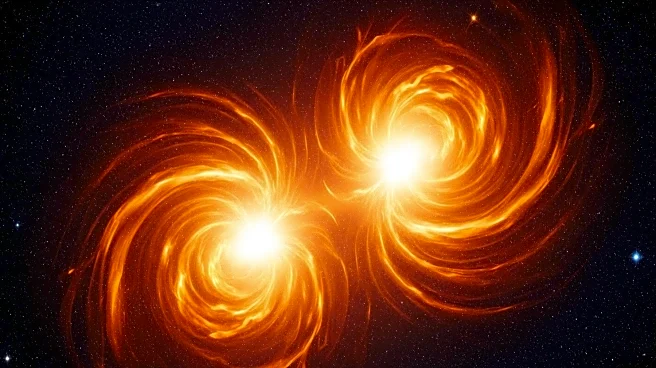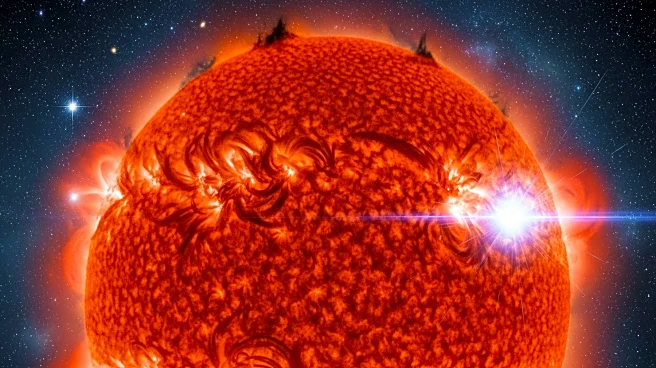What's Happening?
Recent research from the University of St. Andrews suggests that solar flares may reach temperatures over 100 million degrees Fahrenheit, significantly higher than previous estimates of 18 million degrees. Published in the Astrophysical Journal Letters, the study indicates that ions within solar flares can be 6.5 times hotter than previously thought. Solar flares are intense bursts of energy from the Sun's outer atmosphere, capable of affecting satellites, causing radio blackouts, and disrupting power grids. The study challenges the assumption that ions and electrons in solar flares have the same temperature, revealing that temperature differences can persist for tens of minutes.
Why It's Important?
Understanding the true temperatures of solar flares is crucial for improving space weather forecasts, which are vital for protecting satellites, GPS systems, and power grids from geomagnetic storms. These storms, caused by intense solar activity, can last for several days and have widespread impacts on technology and infrastructure. Accurate predictions of solar flare activity could help mitigate these effects, ensuring the reliability of critical systems. The research also provides insights into the fundamental processes of solar physics, potentially resolving long-standing mysteries about the Sun's behavior and its impact on Earth.
What's Next?
The findings may lead to the development of more accurate models for predicting solar activity and its effects on Earth. Researchers will likely continue to study the mechanisms behind the extreme temperatures of solar flares, exploring how these findings can be integrated into existing space weather forecasting systems. Additionally, the study may prompt further investigations into the role of magnetic reconnection in heating ions, potentially leading to new discoveries in solar physics and space weather prediction.












